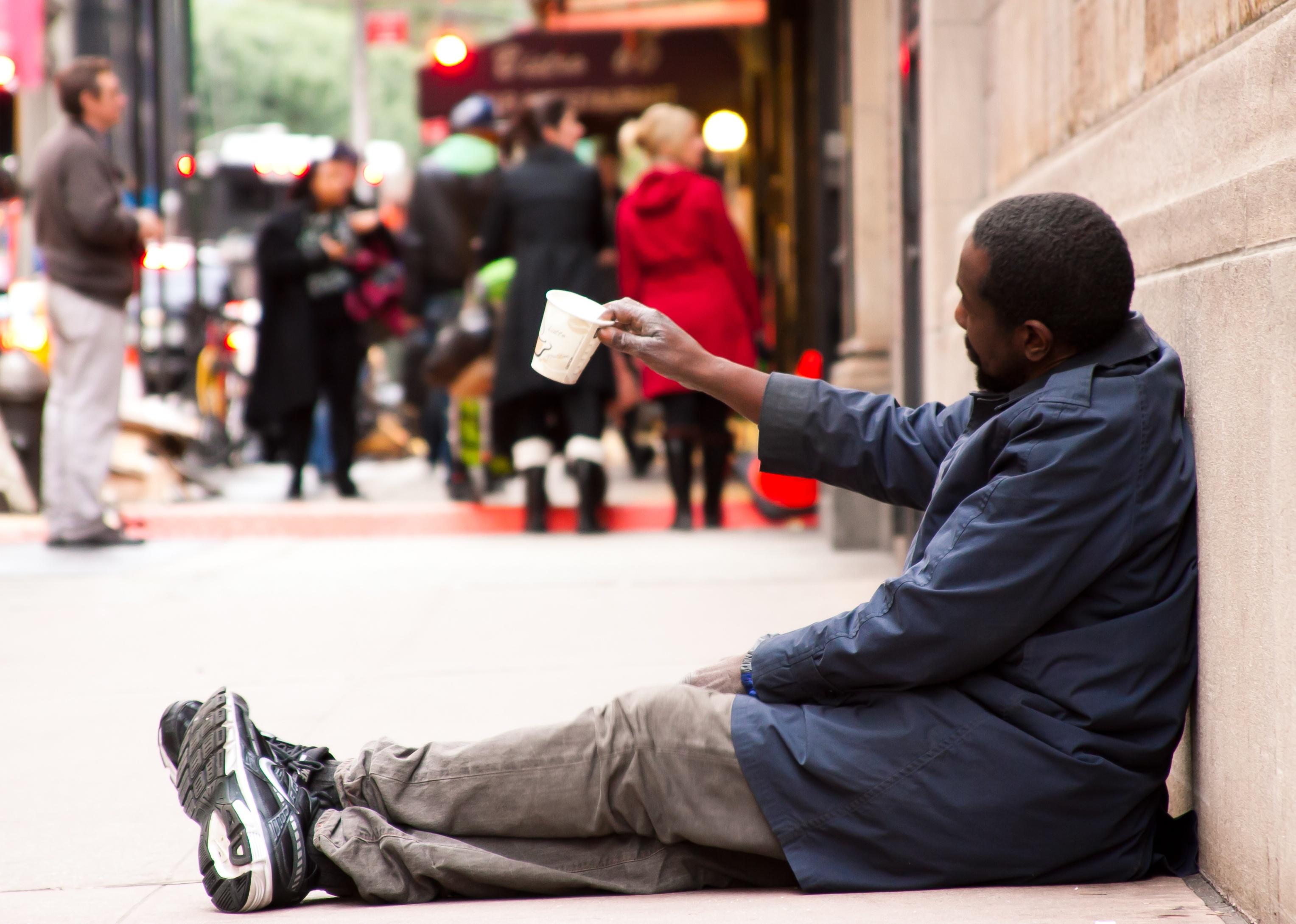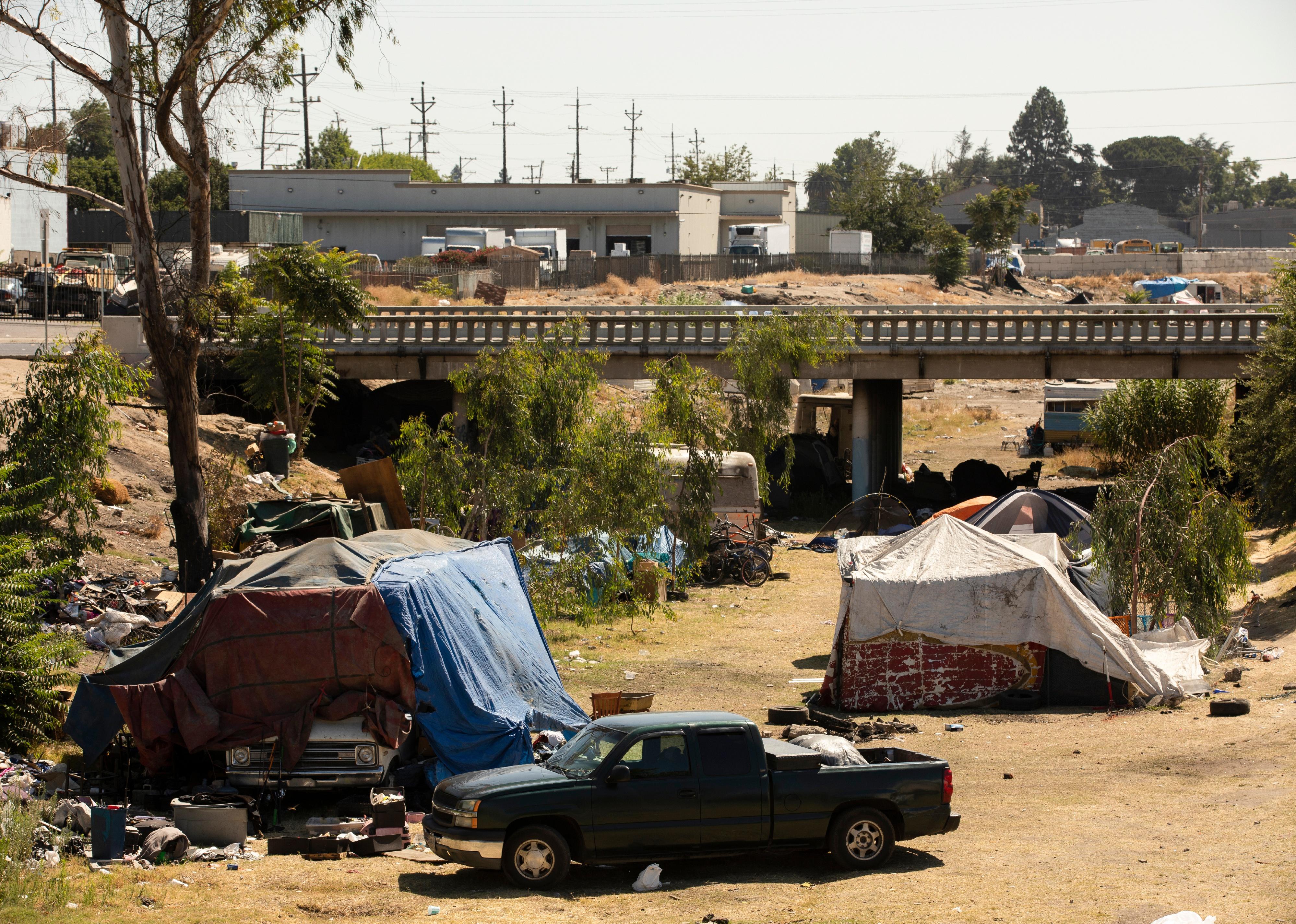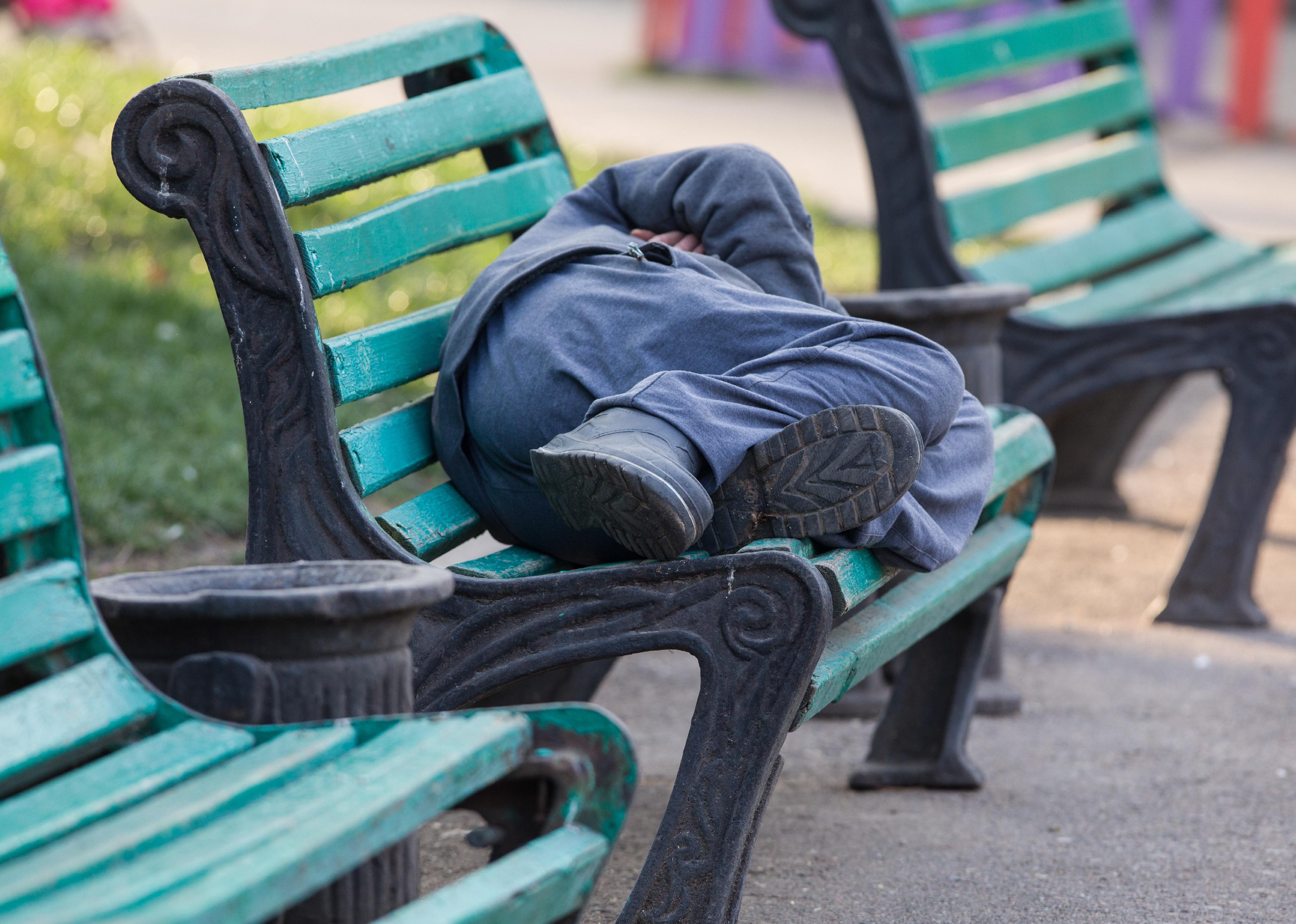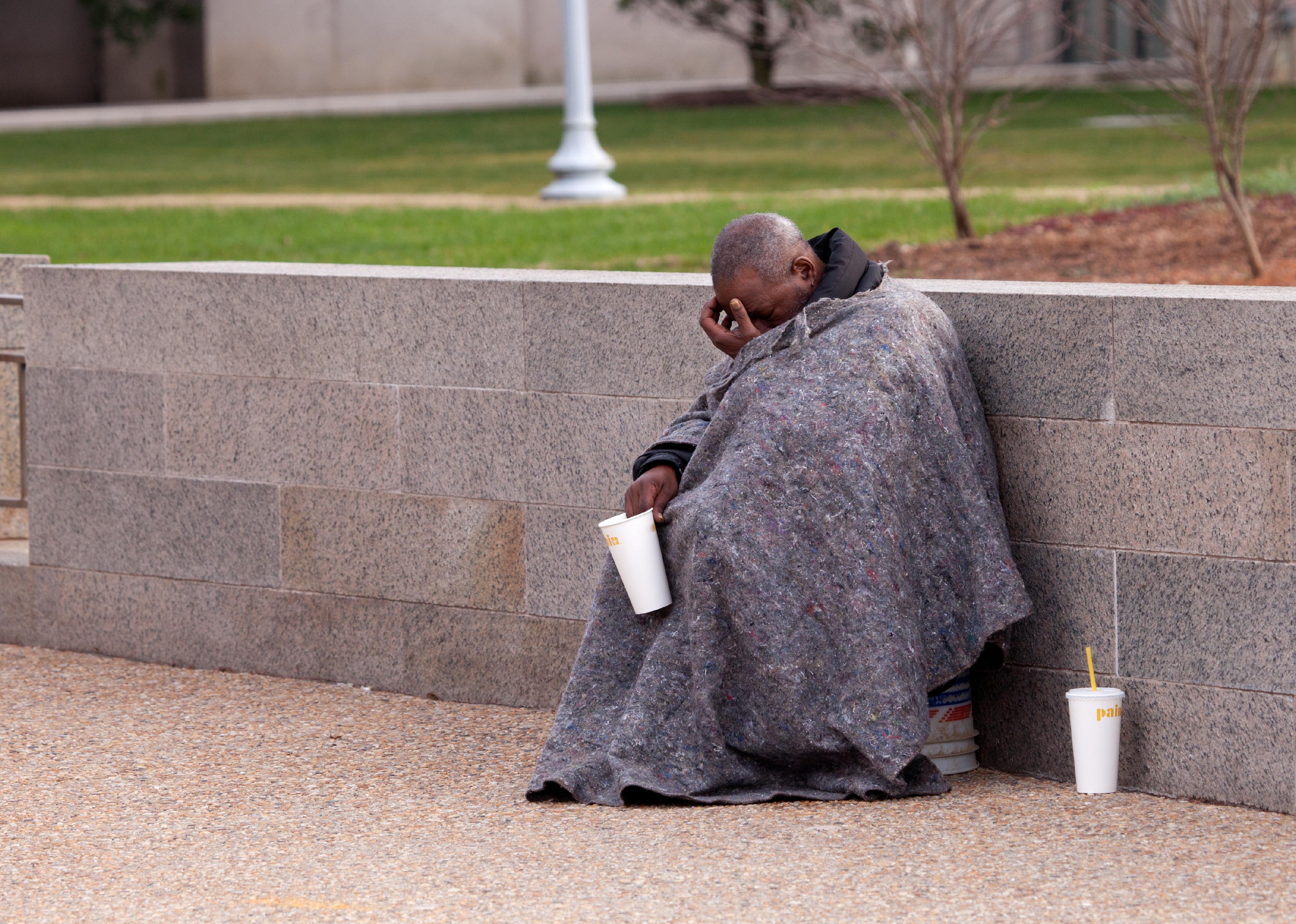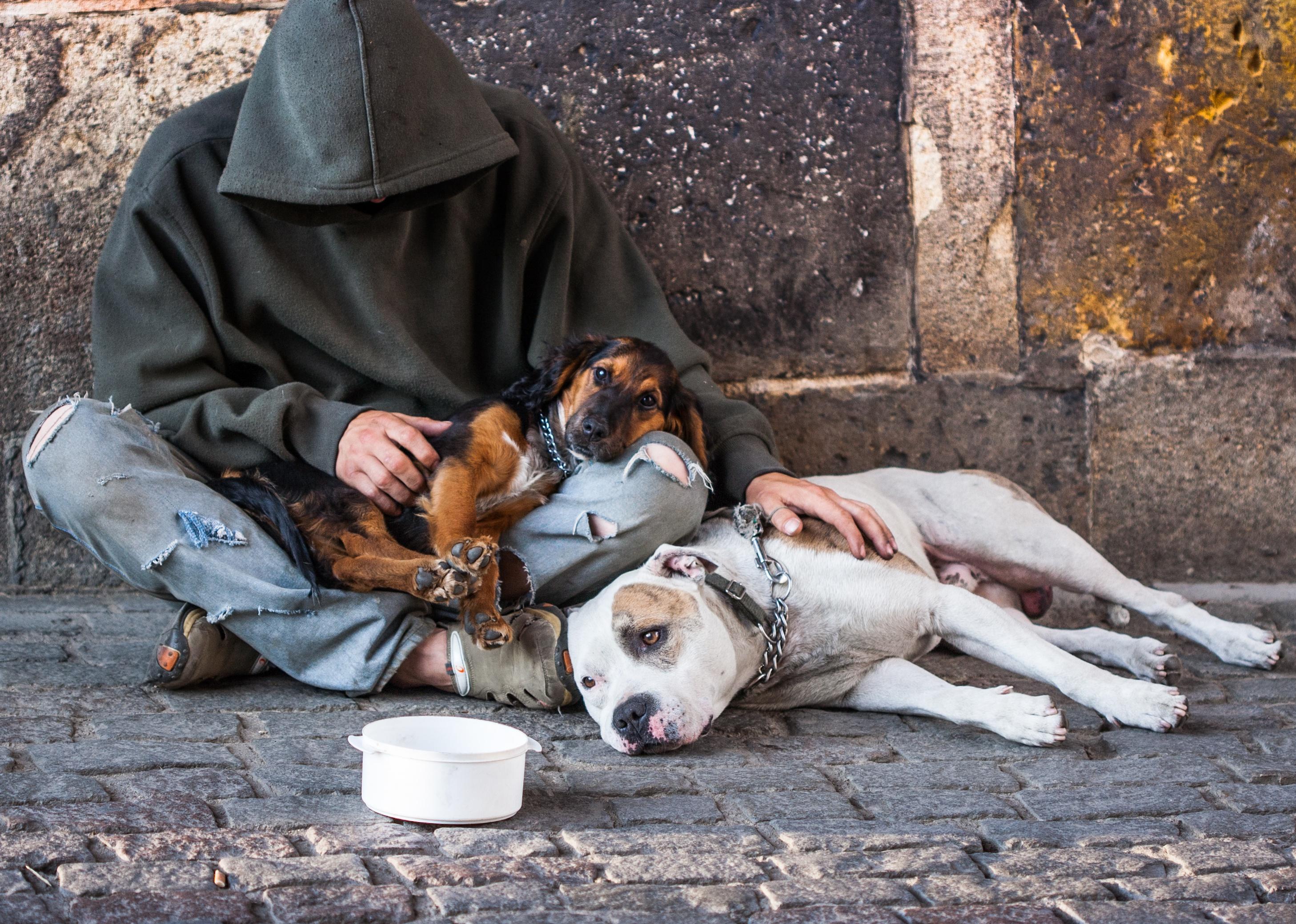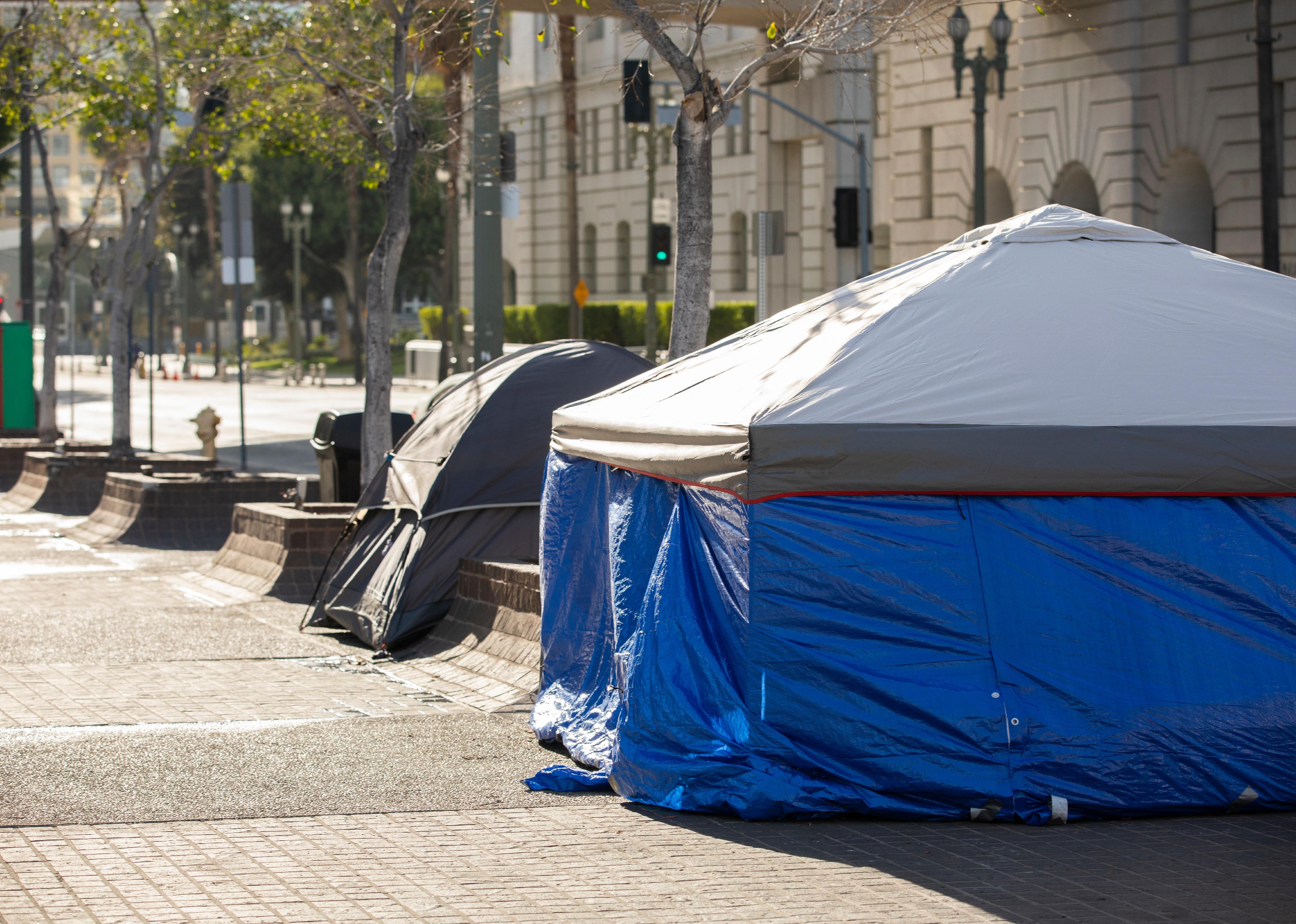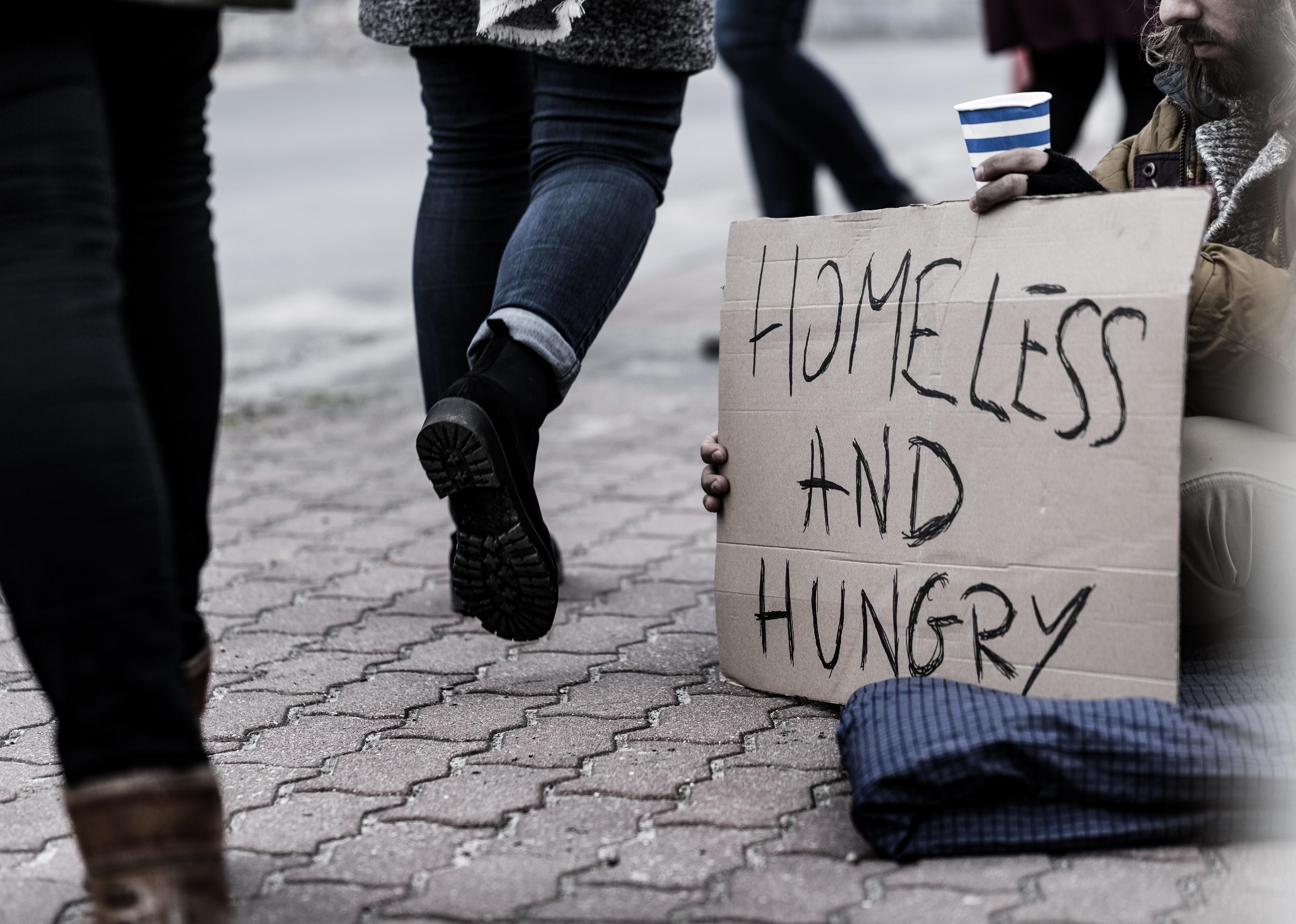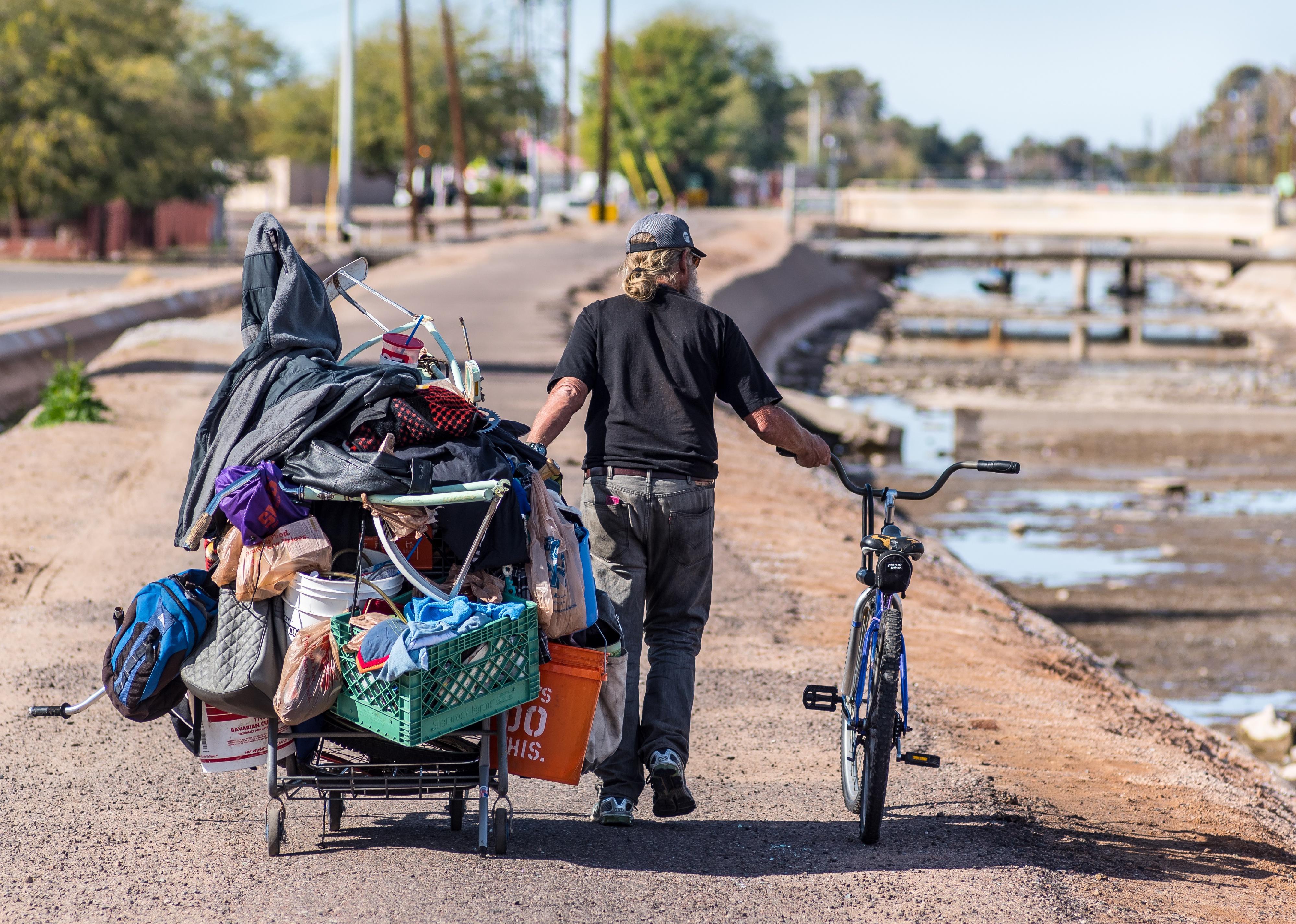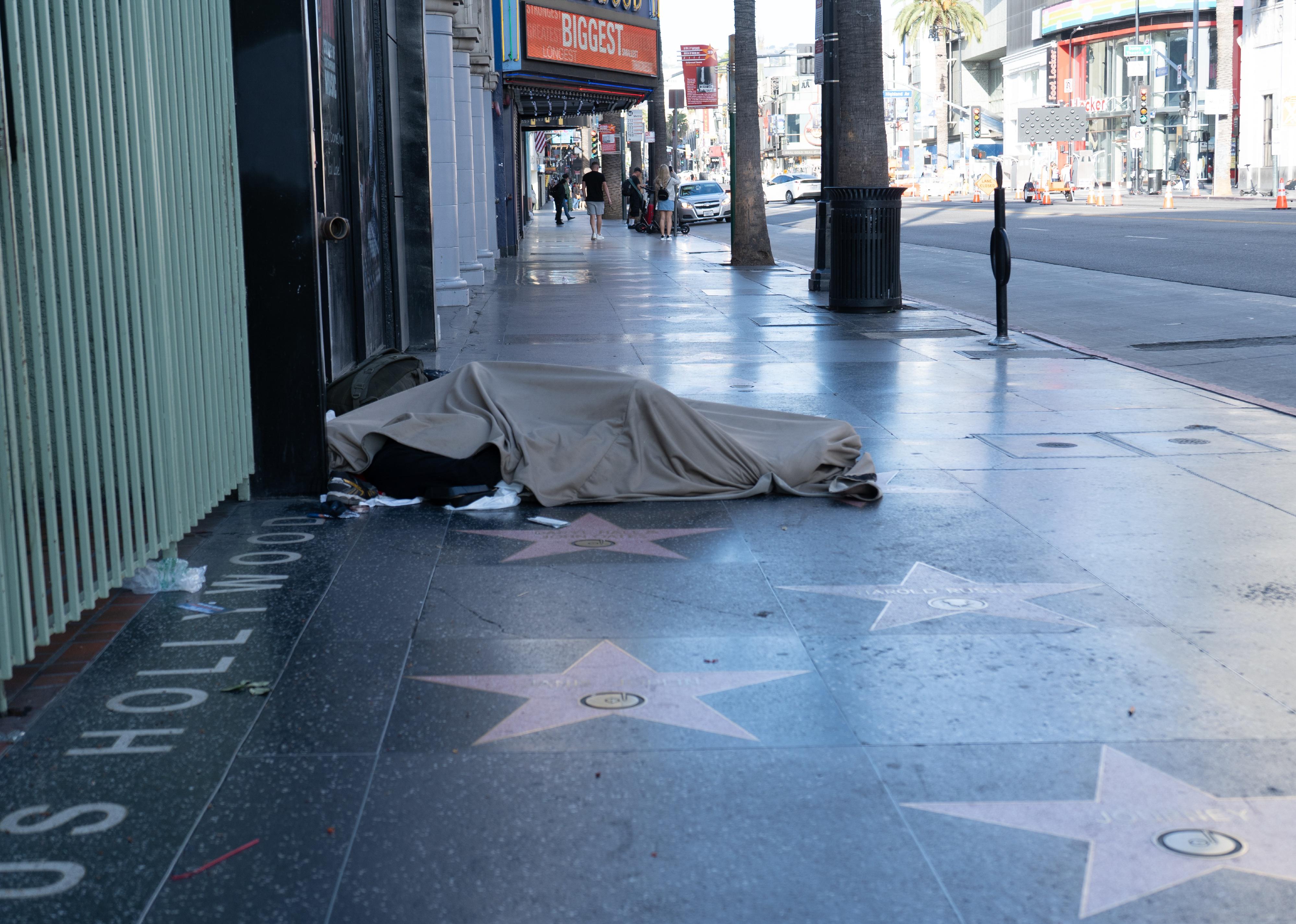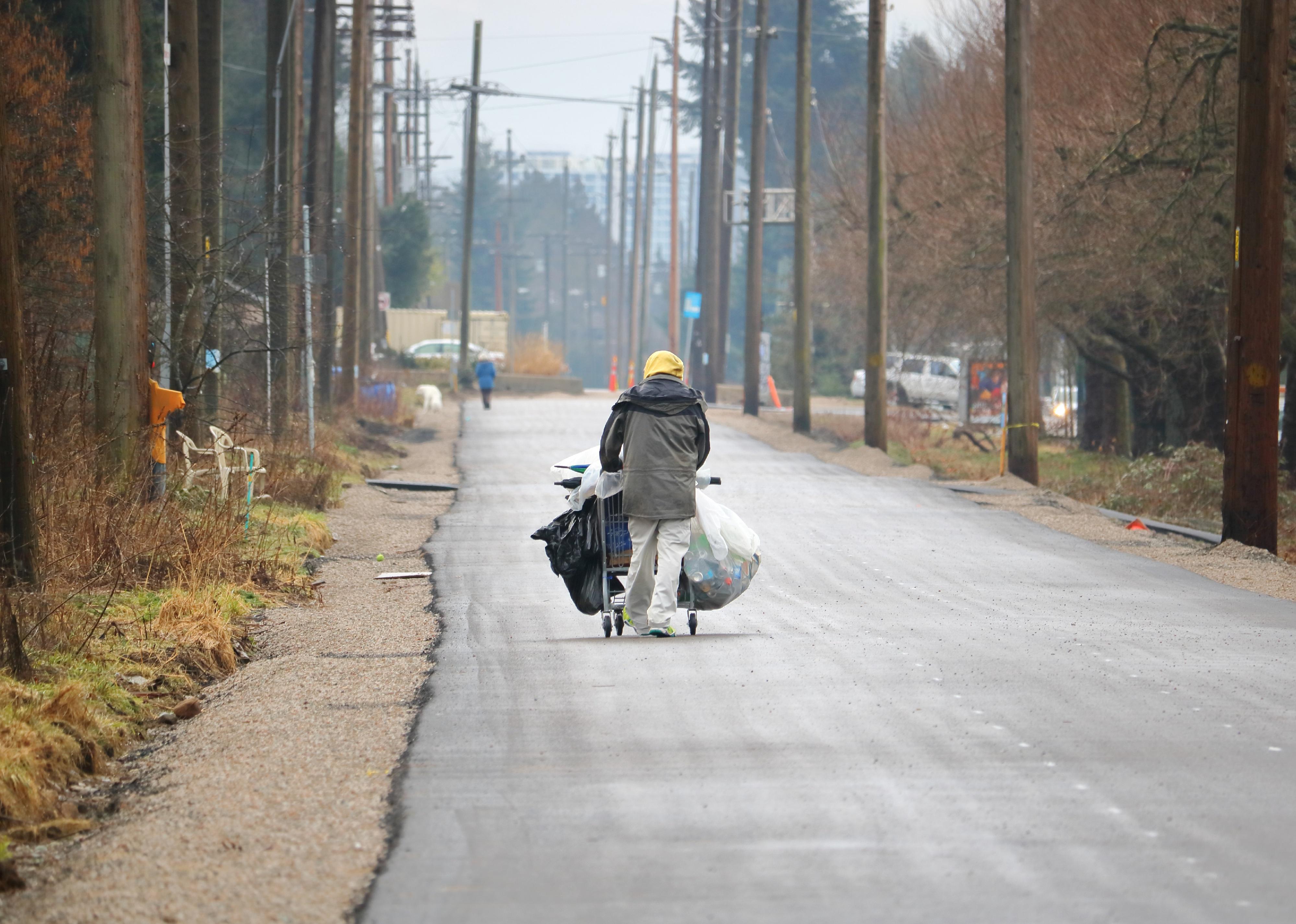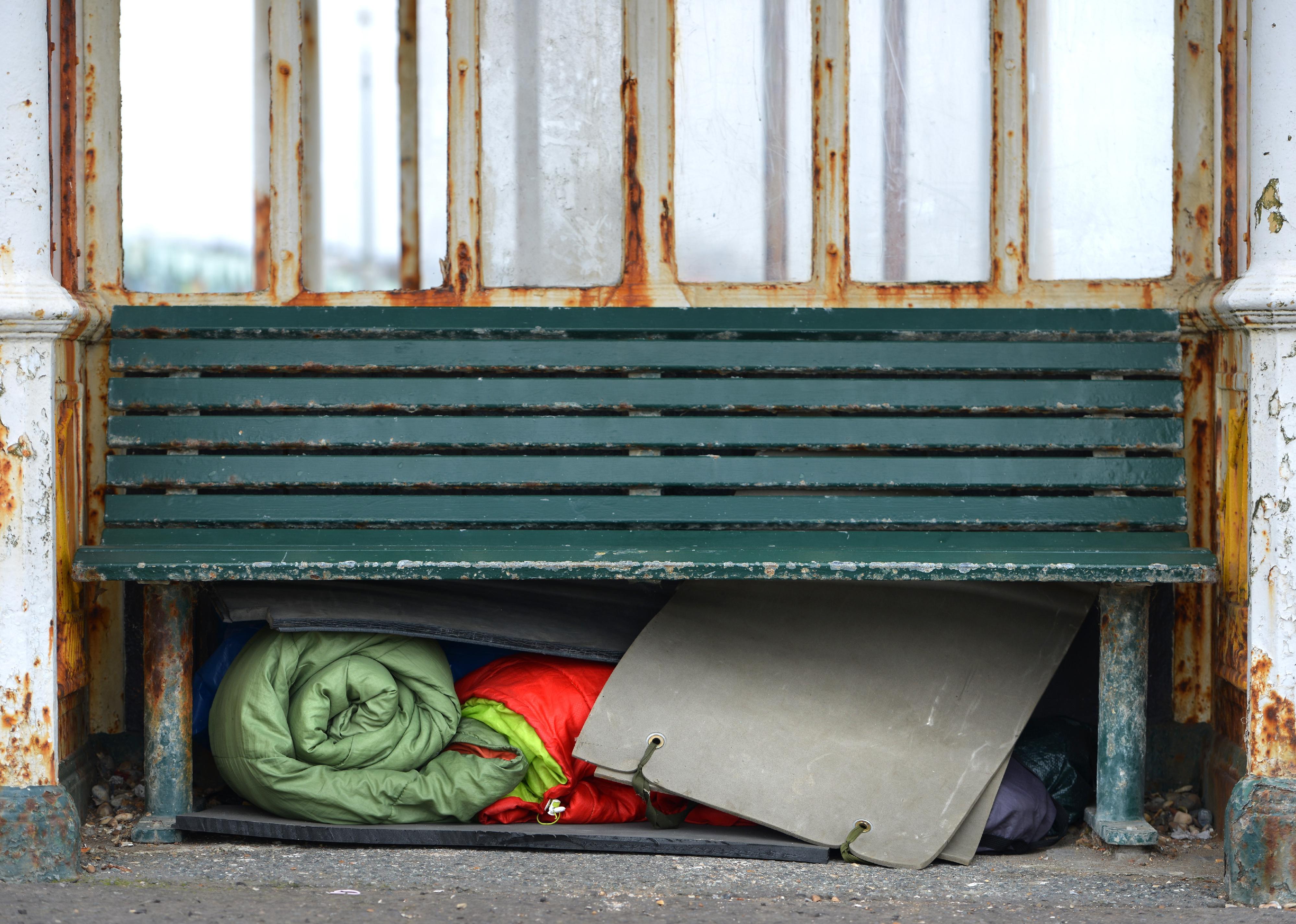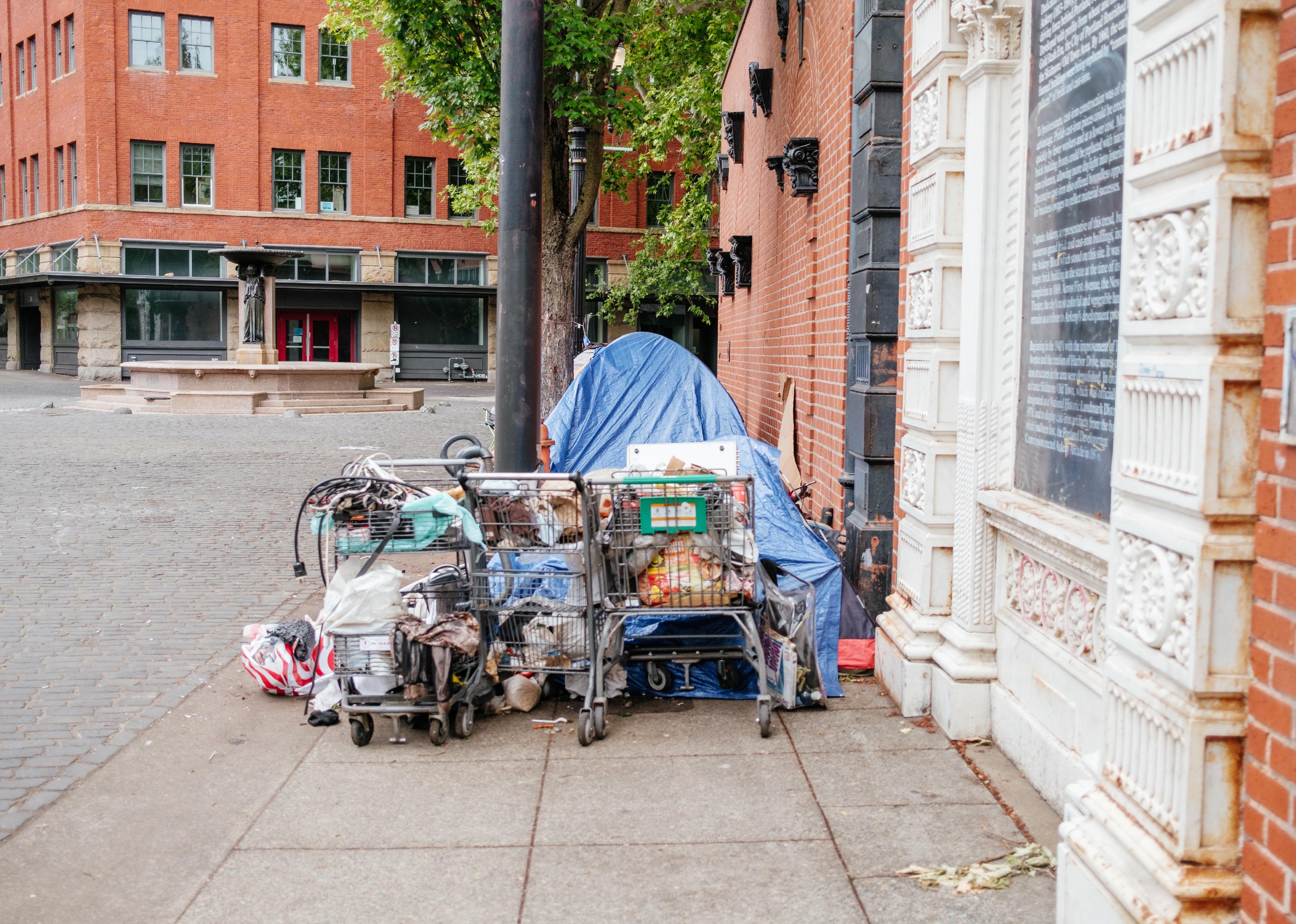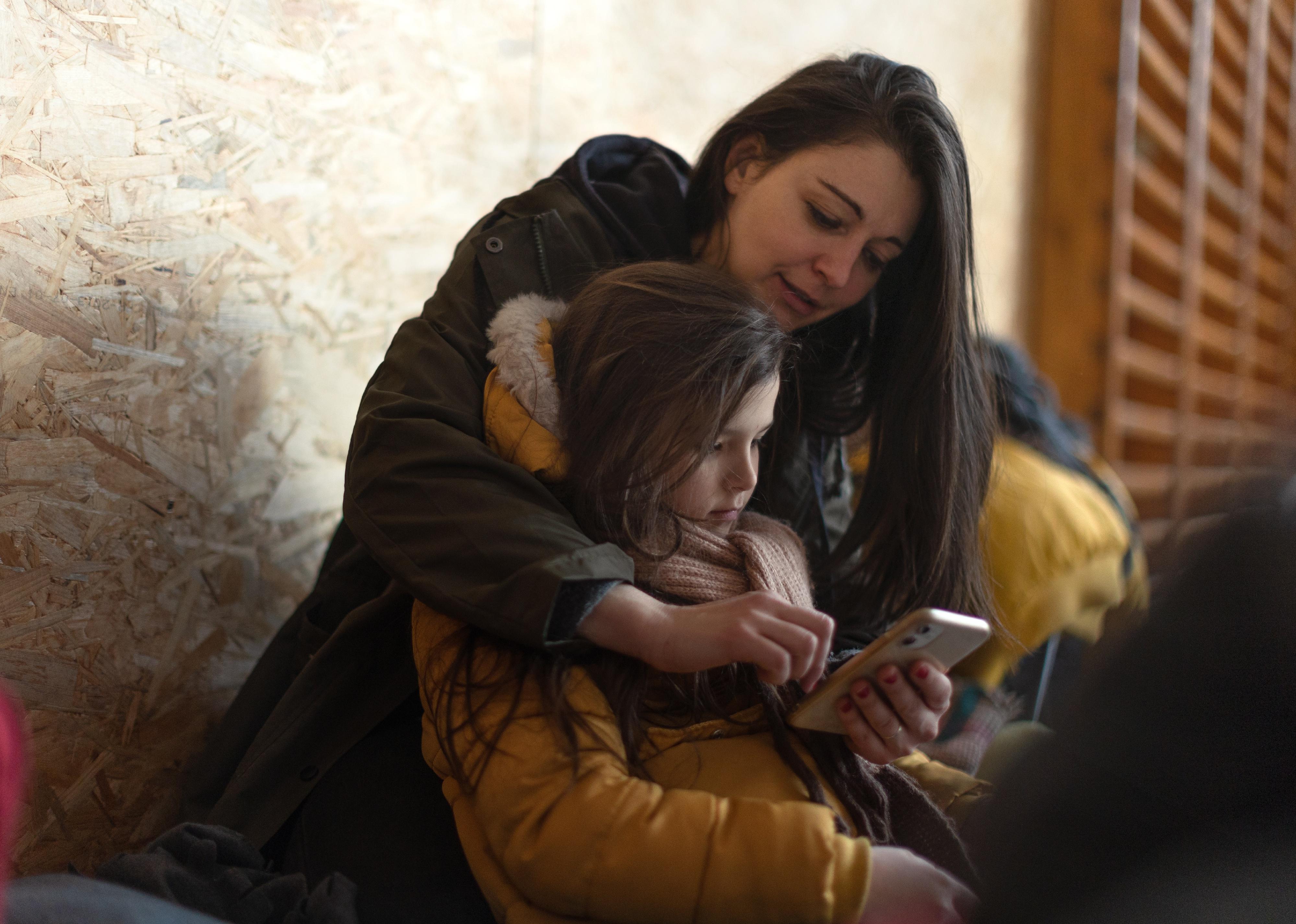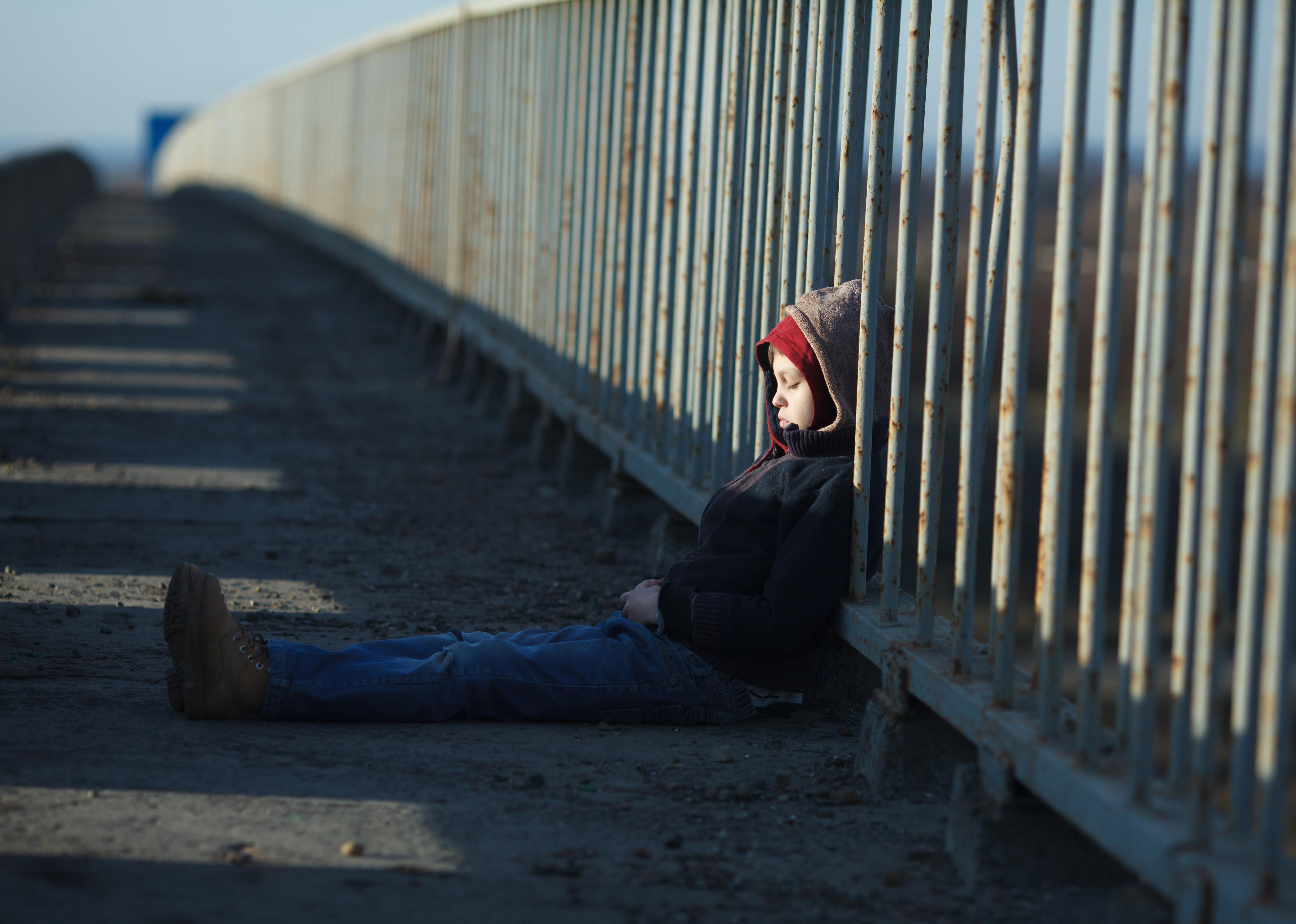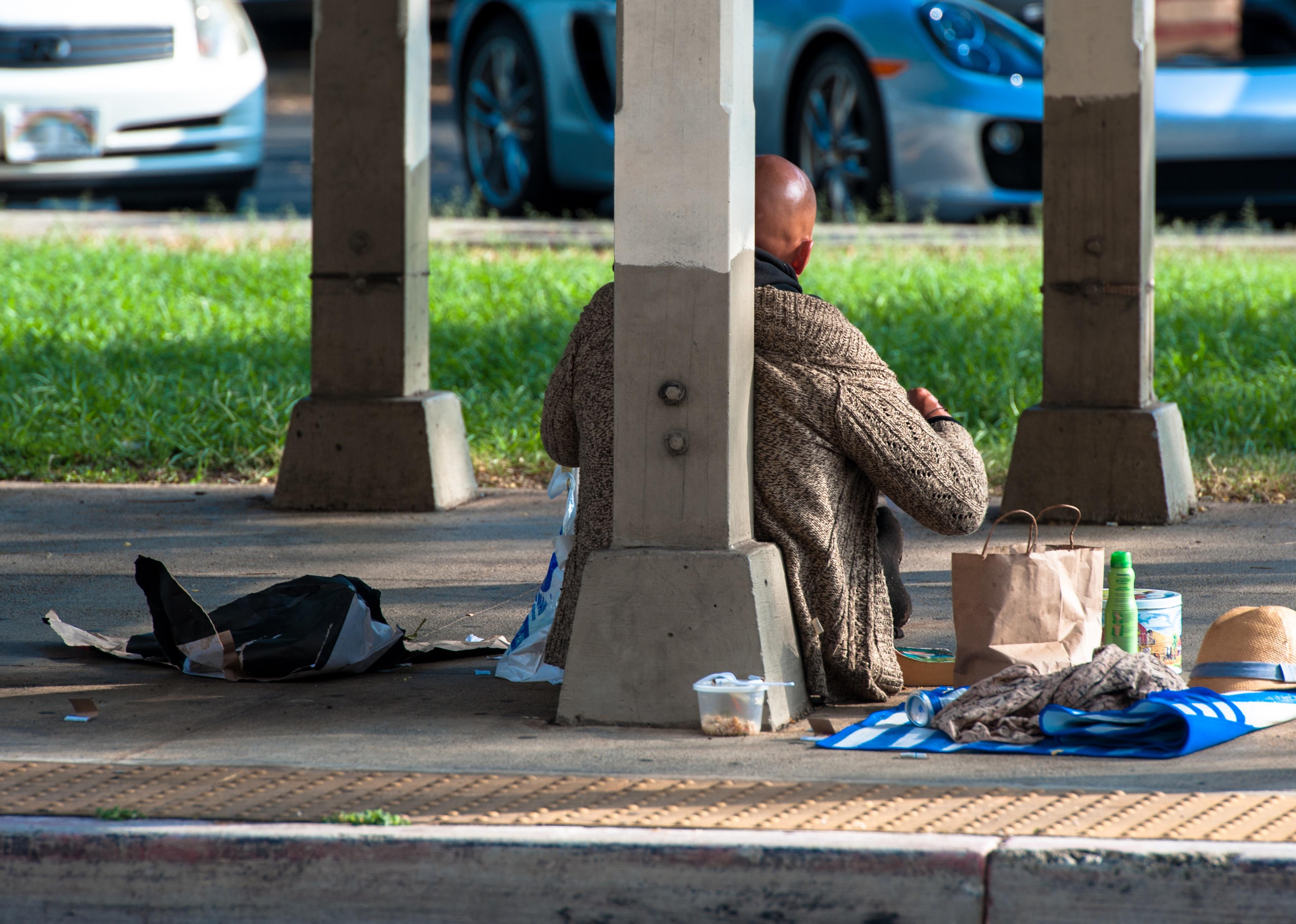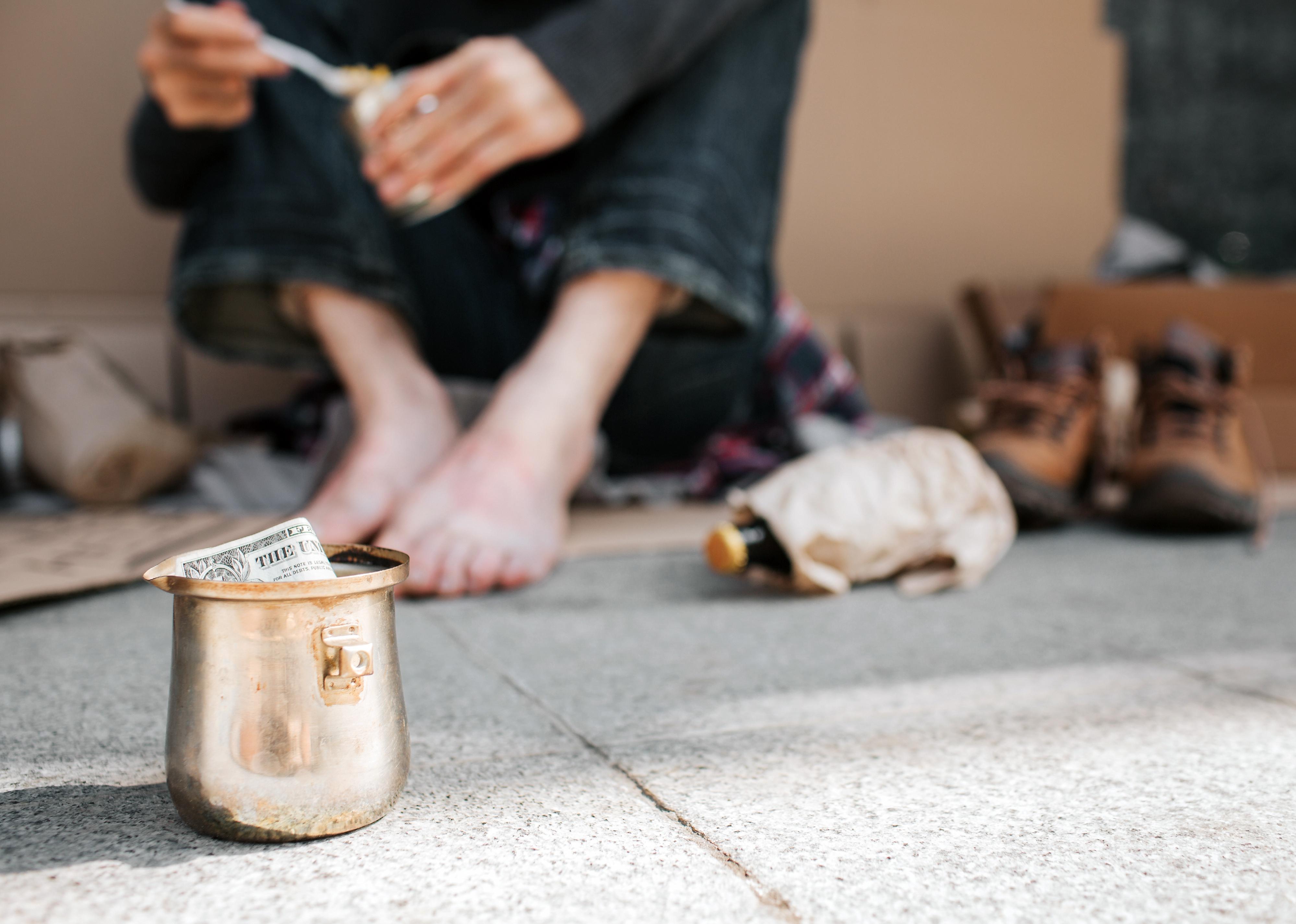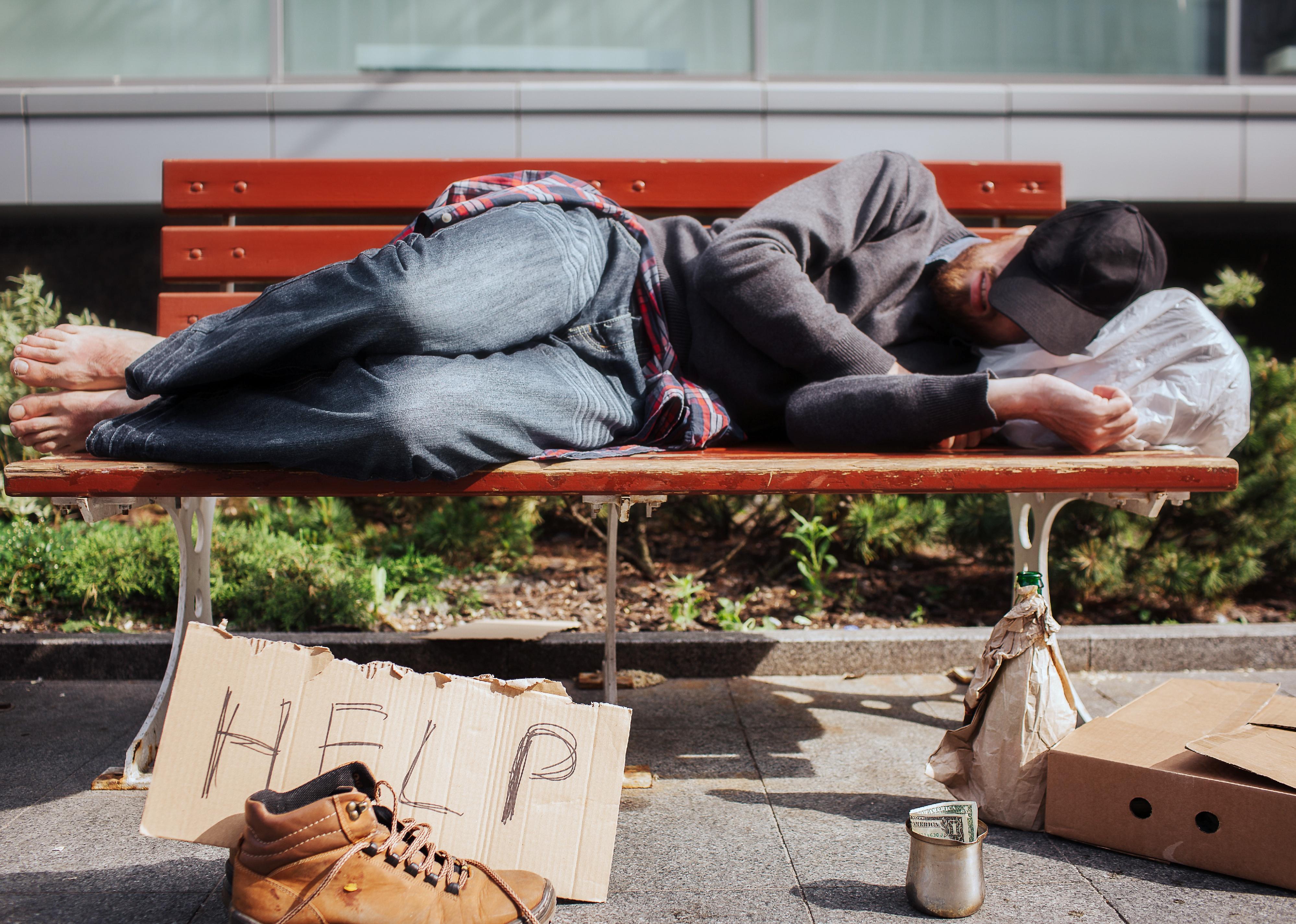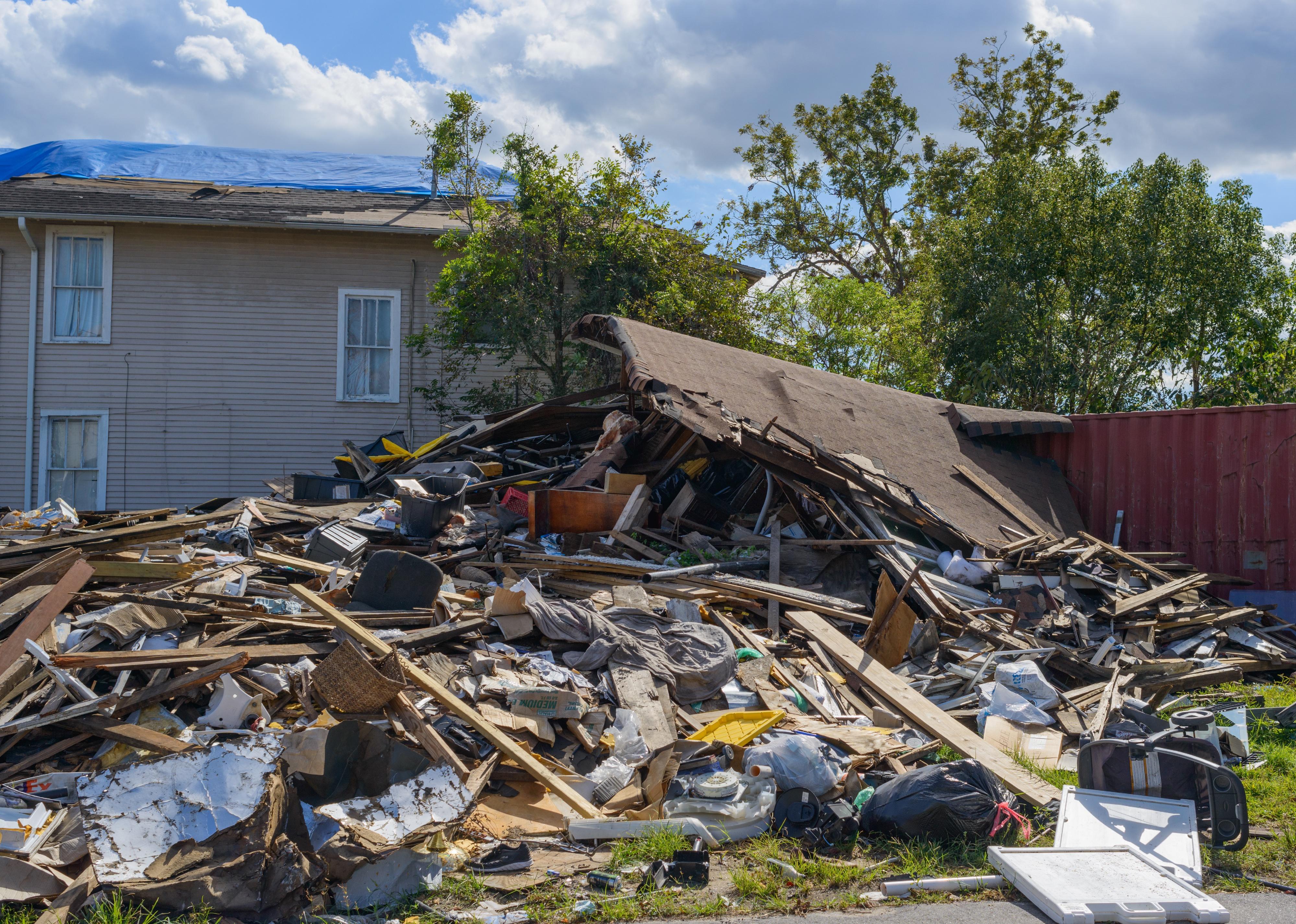20 facts about homelessness in the US
Keep Smiling Photography // Shutterstock
20 facts about homelessness in the US
Homeless man sitting on a street asking for change.
Homelessness is a prominent issue affecting many cities and all racial and ethnic groups across the United States. About 18 in every 10,000 U.S. residents experienced homelessness in 2022, according to the 2023 “State of Homelessness” report by the National Alliance to End Homelessness.
The Department of Housing and Urban Development has a multipartite definition of homelessness, by which a person is considered to be experiencing homelessness when they lack a “fixed, regular, and adequate nighttime residence,” including those staying at temporary shelters, transitional housing, or places not intended for dwelling. The definition also includes persons at risk of imminent loss of their homes with no support networks or alternative housing options to provide them a roof over their heads.
The primary causes of homelessness in the U.S. include a shortage of affordable housing, low income and unemployment, physical and mental health challenges, and domestic violence, according to the National Alliance to End Homelessness.
Using the HUD’s 2022 Annual Homeless Assessment Report, Stacker has compiled a list of statistics and facts about homelessness in the U.S.
![]()
Matt Gush // Shutterstock
According to HUD, there were 582,462 people experiencing homelessness in the U.S. in January 2022
View of a homeless encampment in Stockton, California.
According to the HUD report, more than 50% of individuals experiencing homelessness in the U.S. were located in California, New York, Florida, and Washington, as of 2022. In California alone, the number of people considered unsheltered (in other words, those experiencing homelessness who aren’t in shelters or transitional housing) exceeded half that of those who are unsheltered in the rest of the country combined. California’s unsheltered population is ninefold that of Washington’s—the state with the second-highest number of unsheltered people as of 2022.
Peyker // Shutterstock
The U.S. has seen a 0.3% increase in homelessness since 2020
A homeless man sleeping on a bench.
The year 2020 marked the start of the COVID-19 pandemic and lockdowns in the U.S. Unemployment steeply increased following the lockdowns as businesses shut down and companies began laying off workers, according to the Bureau of Labor Statistics. With unemployment being among the primary causes of homelessness, there was, expectedly, an increase in people experiencing homelessness in the U.S. That said, the federal eviction moratorium did help prevent a drastic rise in homelessness in the country due to people falling behind on rent payments.
Linda Hughes Photography // Shutterstock
Conversely, the U.S. has seen an 8.6% decrease in homelessness since 2010
Homeless man hangs his head while sitting on the street try to collect money.
President Obama’s administration unveiled an ambitious plan called “Opening Doors: Federal Strategic Plan to Prevent and End Homelessness” in 2010. The program aimed to reduce homelessness among people who chronically experienced it—including veterans—by 2020, according to the National Coalition for the Homeless. The plan’s implementation, the 2009 Homeless Emergency Assistance and Rapid Transition to Housing Act, and the U.S. recovery from the 2008 recession are likely to have contributed to the decrease in homelessness since 2010, along with the aforementioned eviction moratorium that stalled a sharp rise of homelessness at the start of the pandemic.
Ground Picture // Shutterstock
Experts from HUD believe that resources from the American Rescue Plan directed toward homelessness assistance lessened the impact of COVID-19 on homelessness
Midsection of group of volunteers in community donation center.
The American Rescue Plan, signed into law by President Biden on March 11, 2021, appropriated $1.9 trillion to help the federal government mitigate the economic effects of COVID-19. The plan included an allocation of $10 billion for combatting homelessness through HUD interventions such as the Emergency Housing Voucher and HOME Investment Partnerships programs. The plan also allotted $5 billion to help persons experiencing or at risk of experiencing homelessness by helping them obtain housing, rental assistance, and support services.
duchy // Shutterstock
The end of the federal eviction moratorium in August 2021 made millions of Americans’ housing situations more precarious during the long tail of the COVID-19 pandemic
Homeless man with two dogs on the street.
Brought into effect by the Centers for Disease Control and Prevention in September 2020, the federal eviction moratorium was initially intended to stop any spread of COVID-19 that could have arisen from homeowners or landlords evicting tenants from their residences for failing to pay rent on time. The Biden administration and the CDC attempted to extend the moratorium in August 2021, but the Supreme Court blocked the move later that month—with the majority opinion contending that by extending the moratorium, the CDC would overstep its authority.
Consequently, the end of the moratorium made people vulnerable to eviction. Furthermore, although the federal government allocated $46.5 billion towards providing rental assistance to Americans defaulting on rent due to the pandemic, only $5.1 billion was given out due to bureaucratic inefficiency and hiccups at the state and local levels, according to The New York Times.
Matt Gush // Shutterstock
As of August 2022, one year after the federal eviction moratorium was lifted, nearly 12% of Americans experienced a rent increase of $250 or more per month
A homeless encampment sits on a street in Downtown Los Angeles.
The persistence of lockdowns in 2021 and companies implementing work-from-home policies meant a strong demand for houses in 2021, according to the Federal Reserve Bank of Dallas. House prices during the pandemic rose to “record levels,” according to the bank, with the peak in July 2021, a month before the Supreme Court decision blocking enforcement of the moratorium. Furthermore, while staying at home, some Americans benefited from savings related to the lack of expenses due to the pandemic, which contributed to the rise in demand for homes. A combination of these and other factors, along with the end of the moratorium, gave way to high rent increases in 2021.
Ground Picture // Shutterstock
The marked increase in rental prices during COVID-19 likely contributed to the recent rise in homelessness
Pedestrians on the sidewalk and homeless man holding a sign.
An increase in rent by $100 translated to a 9% rise in the estimated number of people expressing homelessness as of 2020, according to the Government Accountability Office. With some tenants seeing rent rise by rates of $250 and more during the pandemic, it is unsurprising the number of persons suffering from homelessness rose, even after the pandemic. This, however, is not solely a consequence of pandemic rent increases but also inflation that remained after the pandemic, which reduced people’s spendable income, as wages did not rise in accordance with rising prices for goods and services.
Gregory E. Clifford // Shutterstock
HUD’s Emergency Rental Assistance program received more than 12 million applications for assistance between August 2021 and January 2022
A homeless man pulls an overladen shopping cart along a path next to the Arizona Canal.
The U.S. government instituted the Emergency Rental Assistance program during the pandemic to help households suffering from the economic effects of the pandemic receive assistance in paying rent. Eligibility was based on income and hardship criteria. As previously mentioned, bureaucratic inefficiency and hiccups delayed the disbursement of funds allocated towards the program.
StelsONe // Shutterstock
A greater proportion of people experiencing homelessness were unsheltered in 2022 compared to 2020
Homeless man sleeping on the Hollywood walk-of-fame.
The term “unsheltered homelessness” refers to a situation in which people experiencing homelessness do not have a shelter or temporary home to stay in, whereas people experiencing sheltered homelessness do have access to these options. People facing unsheltered homelessness are forced to encamp in the streets, abandoned buildings, vehicles, or other areas unsuitable for human habitation. People experiencing unsheltered homelessness are prone to the threat of inclement weather and the risk of falling victim to crimes such as theft and sexual assault.
Eric Buermeyer // Shutterstock
40% of all people experiencing homelessness in the U.S. during 2022 were unsheltered
A homeless street person pushes a cart full of discarded bottles and cans.
A challenge people experiencing unsheltered homelessness experience is defensive architecture or hostile architecture, a design principle that aims to stop unintended uses of spaces, often aimed at persons experiencing homelessness. This includes using “anti-homeless spikes” intended to prevent people from sleeping on flat areas, anti-urine paint, and metal bars bifurcating benches. In the absence of adequate transitional housing and homeless shelters, such architectural designs, when commissioned by local authorities, risk forcing persons experiencing homelessness to stay in dangerous and unhealthy areas.
addkm // Shutterstock
Chronic homelessness has increased 15.5% since 2020
Volunteer handing out shelter meal.
According to the National Alliance to End Homelessness, chronic homelessness refers to a situation where an individual experiencing homelessness fails to obtain housing for over a year or on a repeated basis while also suffering from disabilities, mental illnesses, and addiction, which hinders their prospects for employment and obtaining homes, reinforcing their state of homelessness. The alliance notes that once people experiencing chronic homelessness lose their homes, it is very challenging to find housing again due to their physical and mental challenges. According to HUD data, 127,705 people experienced chronic homelessness in 2022.
Peter Cripps // Shutterstock
Veteran homelessness has decreased by 11% since 2020 and more than 50% since 2010
Homeless person’s sleeping bags and bedding under a bench.
Having fought for the country in grueling engagements overseas, many veterans return to the country with challenges such as traumatic brain injury, post-traumatic stress order, physical disability, inability to acclimate to civilian life, and drug and alcohol addictions. These factors make integration into civilian life and responsibilities difficult for veterans, affecting their ability to find housing. Since 2009, the Department of Veterans Affairs has made it a priority matter to ensure veterans have housing stability, and thanks to those efforts, the number of veterans experiencing homelessness has gone down.
Agave Photo Studio // Shutterstock
Family and youth homelessness have both decreased since 2020
Homeless person’s tent and shopping carts on the street in Portland.
Family homelessness in the U.S. decreased by 36.1% since 2010, according to HUD data. Similarly, unaccompanied youth homelessness has fallen by 21.4% since 2017. The overall decrease was possible, especially through the pandemic, due to the federal response to homelessness through the Emergency Rental Assistance program, child tax credits, and financial stimulus packages.
Pressmaster // Shutterstock
50,767 families with children experienced homelessness in 2022
Young female volunteer in medical uniform consulting refugee.
The National Low Income Housing Coalition notes that the U.S. lacks over 7 million affordable housing options for more than 10.8 million low-income families. The coalition assessed that in “no state or county” could a renter working full-time for minimum wage pay for a two-bedroom apartment. Coupled with unemployment and poverty, low-income families with children are forced to face steep trade-offs—balancing the needs of the children, the needs of the parents, and the need for safe, affordable housing.
Halfpoint // Shutterstock
Since 2020, unaccompanied youth homelessness has decreased by 12%
Little girl with her mother in a shelter.
According to the National Alliance to End Homelessness, factors contributing to youth homelessness include conflicts with parents and other family members, poverty, lack of affordable and stable housing options, and mental health and addiction issues. The alliance notes that youth experiencing homelessness are at risk of sex trafficking and exploitation.
Roman Bodnarchuk // Shutterstock
6,398 parenting youth taking care of 7,898 children experienced homelessness in 2022, down 13% since 2020
Young homeless boy sleeping on a bridge.
The Interagency Working Group on Youth Programs defines youth as persons 10 to 24 years old. Parenting youth refers to those within this age group who have children. Several factors could be responsible for parenting youth homelessness, such as stigma within the family toward premarital pregnancies, addiction, abandonment by partners, and family conflicts.
beeboys // Shutterstock
In 2022, 37% of people experiencing homelessness identified as Black, while only 12% of the overall U.S. population identifies as Black
Homeless man sitting on the side of the street.
According to the National Alliance to End Homelessness, the disproportionate representation of Black people in statistics of people experiencing homelessness is influenced by the impact of historical factors and systemic racism. Historically, Black people were discriminated against through practices such as redlining, where banks declined to invest in or insure homes based on an area’s racial demographics.
Historical factors also affect the economic prospects of Black people through their impact on access to education and consequently, employment. Gentrification also raises property prices and rental rates, disproportionately harming Black people who struggle to find affordable housing.
Estrada Anton // Shutterstock
From 2020 to 2022, the number of people who identified as Hispanic or Latino who experienced homelessness rose by 8%
A picture of a cup standing on concrete ground.
“Understanding Low-Income Hispanic Housing Challenges and the Use of Housing and Homelessness Assistance,” published in the journal Cityscape, notes that Hispanic people are underrepresented in housing and homelessness assistance programs compared to the rate of poverty in the demographic group. Furthermore, the lack of citizenship and barriers set by immigration law make accessing support systems and public resources difficult for some Hispanic people experiencing homelessness.
Estrada Anton // Shutterstock
The number of people who identify as Hispanic and experienced unsheltered homelessness in 2022 rose 16% since 2020
Homeless man is lying on bench and sleeping.
According to a report from Cornell University, one barrier Hispanic people experiencing unsheltered homelessness face is the fear that visiting shelters could lead to consequences based on their immigration status. Furthermore, as previously mentioned, Hispanic people are underrepresented in the statistics of people who seek housing and homelessness assistance programs.
William A. Morgan // Shutterstock
Natural disasters often have a significant impact on the number of people using shelters
Demolished house that collapsed during Hurricane Ida.
Natural disasters like hurricanes and tornadoes could destroy homes, leaving people without alternative housing options and forcing them to seek housing in shelters until they find a roof to keep over their heads. Natural disasters also have a greater negative impact on already homeless people who are prone to the risks of extreme weather.
Additional reporting by Emilia Ruzicka. Story editing by Brian Budzynski. Copy editing by Tim Bruns. Photo selection by Clarese Moller.
